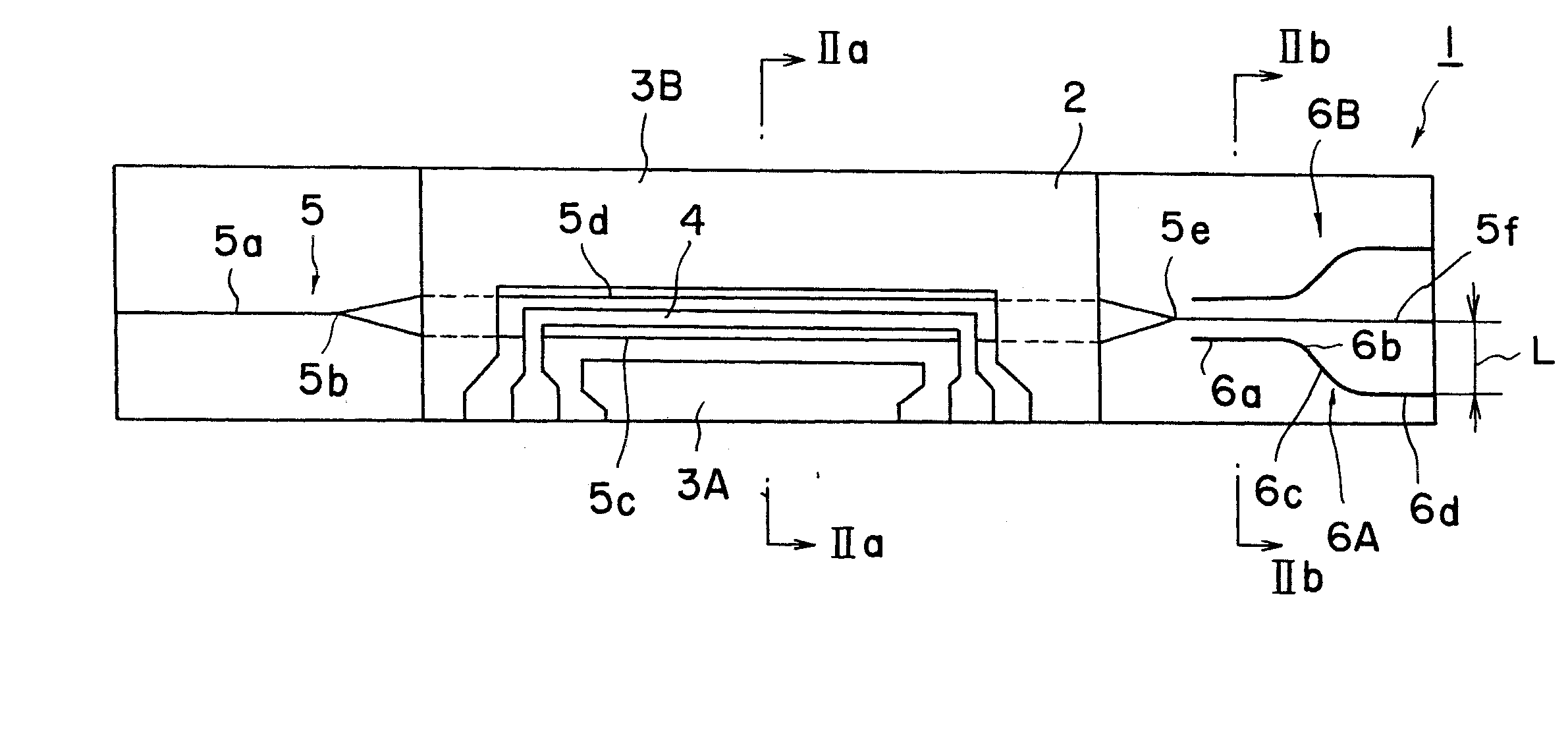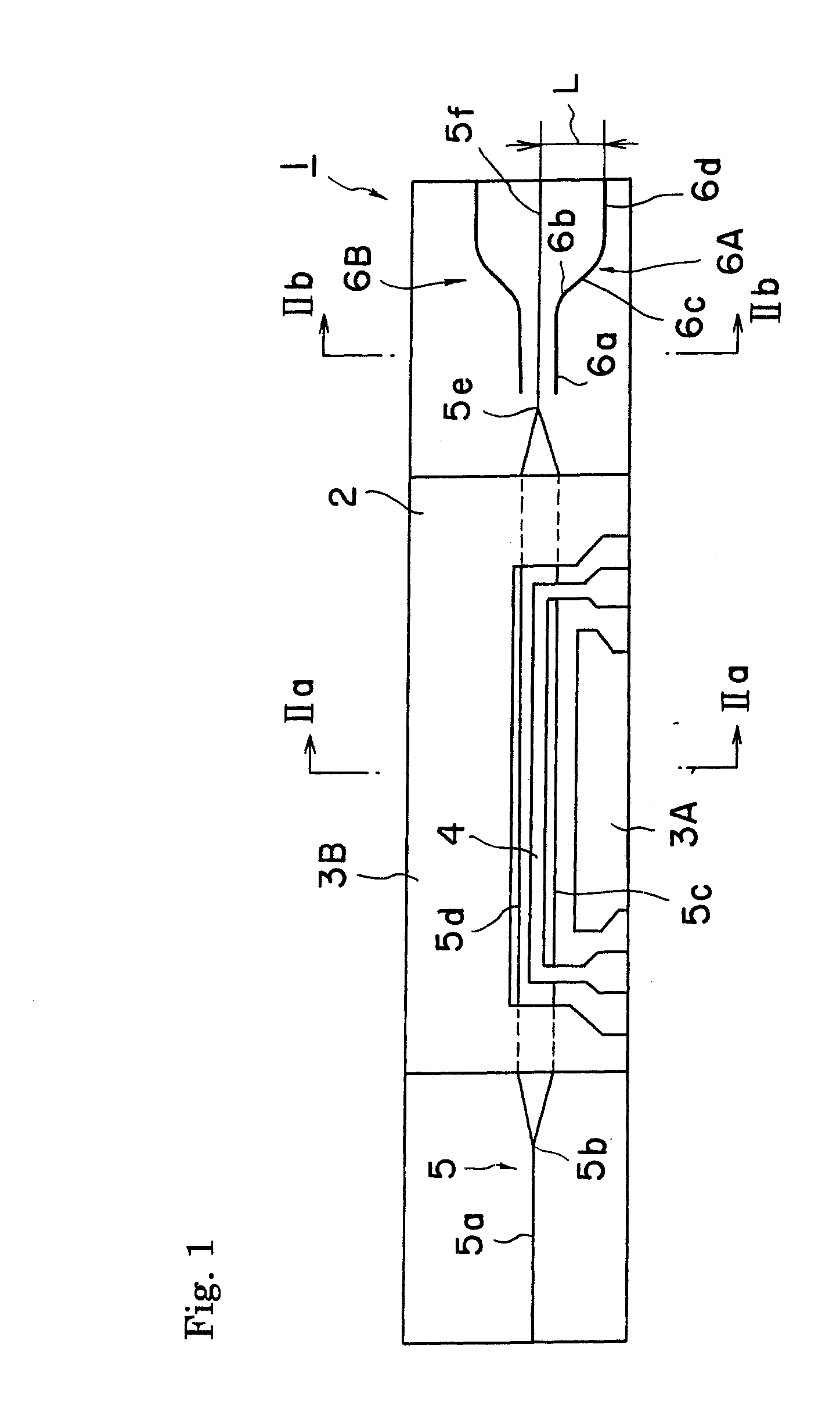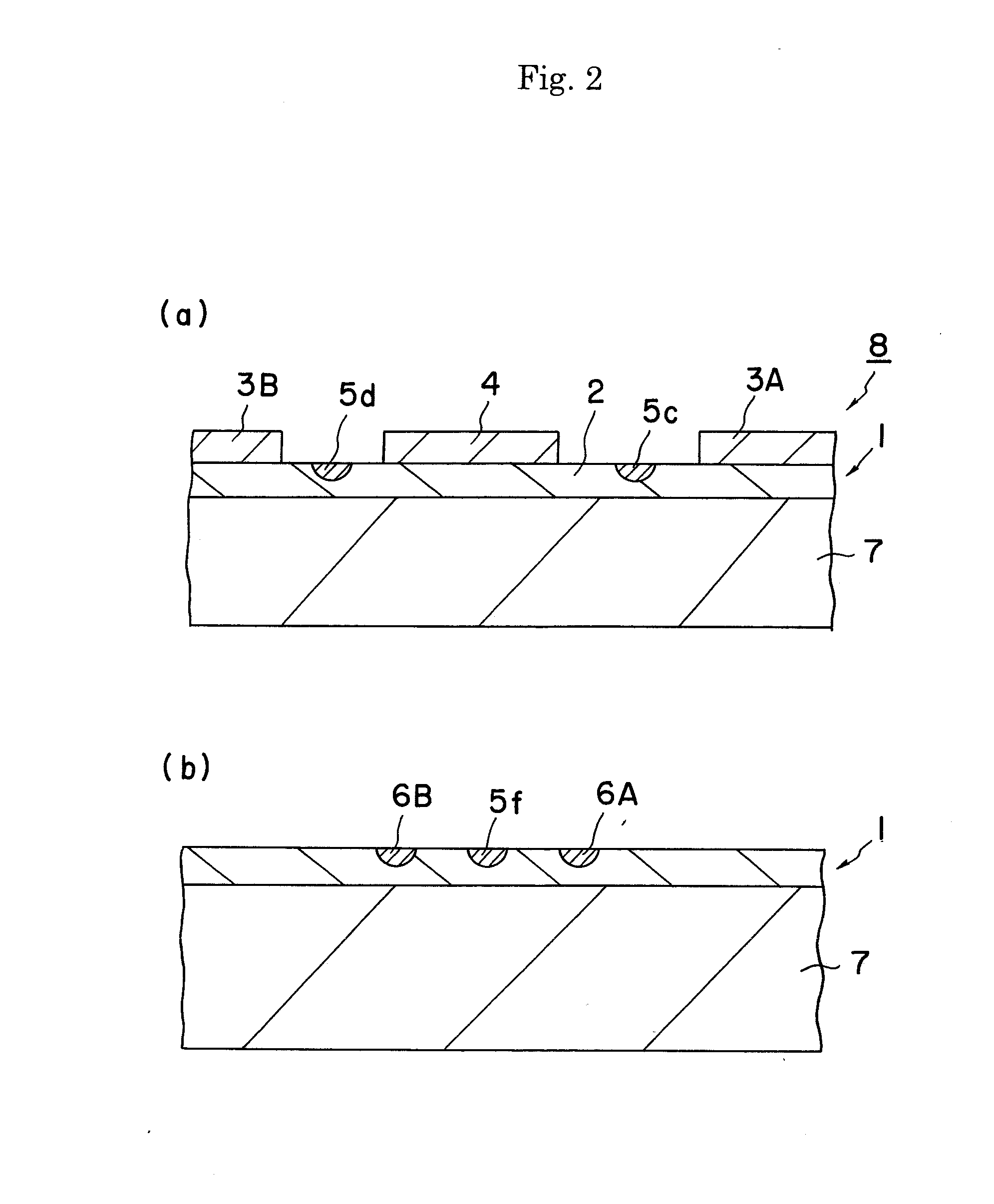Optical modulator
a modulator and optical technology, applied in optics, instruments, optical light guides, etc., can solve the problems of difficult to separate primary mode light from signal light, and achieve the effects of reducing the thickness of substrate, enhancing the confinement of light into the substrate, and reducing the loss of curving optical waveguides
- Summary
- Abstract
- Description
- Claims
- Application Information
AI Technical Summary
Benefits of technology
Problems solved by technology
Method used
Image
Examples
example 1
[0052] The optical modulator 1 of FIG. 1 was manufactured according to the method described in reference to FIGS. 1 to 3 and tested. Concretely, a substrate consisting of an X-cut 3-inch wafer (LiNbO3 single crystal) is used, and a Mach-Zehnder optical waveguide 5 is formed on a surface of the wafer by titanium diffusion process and photolithography. A CPW electrode is formed by plating process. The gap of a central electrode 4 to ground electrodes 3A and 3C is 25 μm, the electrode thickness is 20 μm, and the electrode length is 32 mm. A grinding dummy substrate is stuck to a grinding surface plate for thinning grinding, and the modulator substrate is stuck thereto through a thermoplastic resin with the electrode surface down. Further, the substrate body is thinned to a thickness of 8 μm by horizontal grinding and polishing (CMP). Thereafter, the flat plate-like support substrate 7 is adhered and fixed to the substrate body, and a connection part for an optical fiber is end surface-...
example 2
[0054] Investigation was performed for the optical modulator described in reference to FIGS. 4 and 5.
[0055] Concretely, the material of the optical modulator and the forming method of the optical waveguide are the same as in the Example 1. In a photodiode having a light receiving area of 50 μm, Wti-m was set to 30 μm in consideration of spread. The curvature radius r of the curved part of the guiding waveguide was set to 5 mm. The substrate thickness of the optical modulator was changed as shown in FIG. 6 with λ of 1.55 μm. FIG. 11 shows the planar positional relation of the guide waveguide and the emission part 5f. The distance Sx between the edge of each guide waveguide and the central axis of the emission part is 20 μm.
[0056] The optical loss of off-light (primary mode light) was measured while changing the thickness Tsub of the substrate in this state. Consequently, the results shown in FIG. 6 were obtained. Namely, it was found that when the thickness of the substrate is 20 μ...
example 3
[0057] The optical loss of the primary mode light propagating in the guiding waveguide was tested in the same manner as in the Example 2. In this example, λ is 1.55 μm, the substrate thickness Tsub of the optical modulator is 8 μm, titanium thickness Tti is 600 Å, the width Wti of the signal light emission part is 5 μm, and the width Wti-m of the guiding waveguide is 30 μm. The distance Sx between the edge of the guiding waveguide and the central axis of the emission part and the curvature radius r of the curved part of the guiding waveguide were changed as shown in FIG. 7.
[0058] As a result, the optical loss at R of 20 μm or less was suppressed to 10 dB or less. Even if Sx is variously changed between 10 μm and 100 μm, the optical loss in the guiding waveguide was not substantially increased.
PUM
| Property | Measurement | Unit |
|---|---|---|
| thickness | aaaaa | aaaaa |
| distance | aaaaa | aaaaa |
| width | aaaaa | aaaaa |
Abstract
Description
Claims
Application Information
 Login to View More
Login to View More - R&D
- Intellectual Property
- Life Sciences
- Materials
- Tech Scout
- Unparalleled Data Quality
- Higher Quality Content
- 60% Fewer Hallucinations
Browse by: Latest US Patents, China's latest patents, Technical Efficacy Thesaurus, Application Domain, Technology Topic, Popular Technical Reports.
© 2025 PatSnap. All rights reserved.Legal|Privacy policy|Modern Slavery Act Transparency Statement|Sitemap|About US| Contact US: help@patsnap.com



